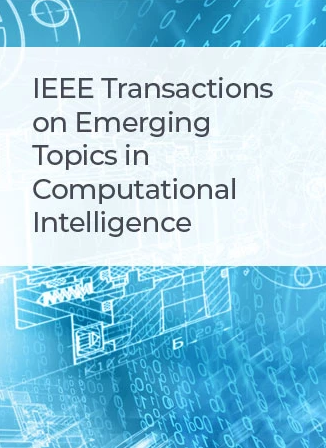基于交替方向乘法的自适应非负潜因分析法
IF 5.3
3区 计算机科学
Q1 COMPUTER SCIENCE, ARTIFICIAL INTELLIGENCE
IEEE Transactions on Emerging Topics in Computational Intelligence
Pub Date : 2024-07-22
DOI:10.1109/TETCI.2024.3420735
引用次数: 0
摘要
大规模交互数据经常出现在与大数据相关的工业应用中。由于在真实场景中,众多节点之间通常只发生很少的交互,此类数据可量化为高维不完整(HDI)矩阵,其中大部分条目都是未知的。基于交替方向法的非负潜因模型可以对 HDI 矩阵进行高效、准确的表示,但其多个超参数极大地限制了其在实际应用中的可扩展性。为了实现高可扩展性和高效的潜因模型,本文采用粒子群优化原理和树状结构的帕岑估计算法来促进超参数适应机制,从而建立了基于交替方向法的自适应非负潜因模型(A2NLF)。其理论收敛性得到了严格证明。对几个实际应用中的非负 HDI 矩阵进行的实证研究表明,与几个最先进的模型相比,所提出的 A2NLF 模型能获得更高的计算和存储效率,同时还能显著提高精度。该模型的超参数自适应实现得非常顺利,从而大大提高了其在实际问题中的可扩展性。本文章由计算机程序翻译,如有差异,请以英文原文为准。
Alternating-Direction-Method of Multipliers-Based Adaptive Nonnegative Latent Factor Analysis
Large scale interaction data are frequently found in industrial applications related with Big Data. Due to the fact that few interactions commonly happen among numerous nodes in real scenes, such data can be quantified into a High-Dimensional and Incomplete (HDI) matrix where most entries are unknown. An alternating-direction-method-based nonnegative latent factor model can perform efficient and accurate representation leaning to an HDI matrix, while its multiple hyper-parameters greatly limit its scalability for real applications. Aiming at implementing a highly-scalable and efficient latent factor model, this paper adopts the principle of particle swarm optimization and the tree-structured parzen estimator algorithm to facilitate the hyper-parameter adaptation mechanism, thereby building an Alternating-direction-method-based Adaptive Nonnegative Latent Factor (A
2
NLF) model. Its theoretical convergence is rigorously proved. Empirical studies on several nonnegative HDI matrices from real applications demonstrate that the proposed A
2
NLF model obtains higher computational and storage efficiency than several state-of-the-art models, along with significant accuracy gain. Its hyper-parameter adaptation is implemented smoothly, thereby greatly boosting its scalability in real problems.
求助全文
通过发布文献求助,成功后即可免费获取论文全文。
去求助
来源期刊

IEEE Transactions on Emerging Topics in Computational Intelligence
Mathematics-Control and Optimization
CiteScore
10.30
自引率
7.50%
发文量
147
期刊介绍:
The IEEE Transactions on Emerging Topics in Computational Intelligence (TETCI) publishes original articles on emerging aspects of computational intelligence, including theory, applications, and surveys.
TETCI is an electronics only publication. TETCI publishes six issues per year.
Authors are encouraged to submit manuscripts in any emerging topic in computational intelligence, especially nature-inspired computing topics not covered by other IEEE Computational Intelligence Society journals. A few such illustrative examples are glial cell networks, computational neuroscience, Brain Computer Interface, ambient intelligence, non-fuzzy computing with words, artificial life, cultural learning, artificial endocrine networks, social reasoning, artificial hormone networks, computational intelligence for the IoT and Smart-X technologies.
 求助内容:
求助内容: 应助结果提醒方式:
应助结果提醒方式:


